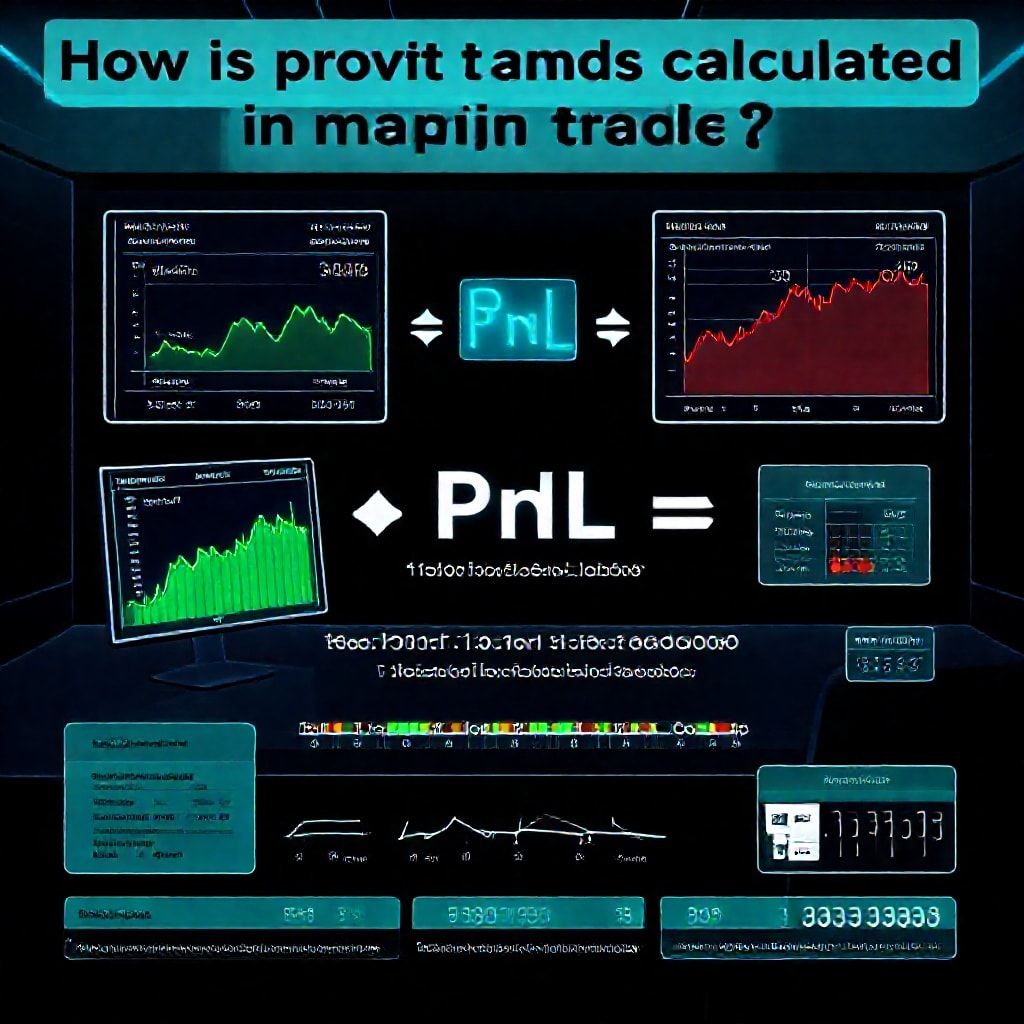How is profit and loss calculated in margin trading?
How Is Profit and Loss Calculated in Margin Trading?
Introduction
Margin trading lets you take bigger bets by borrowing capital, but it also magnifies risk. Getting your head around P&L in this setup isn’t just about price moves—it’s about exposure, financing costs, and how your chosen margin model handles risk. This piece breaks down the math, walks through practical examples, and links the concept to the wider world of web3 finance, from forex to crypto, stocks to commodities.

How P&L is calculated in margin trades
- Core idea: your profit or loss on a margin position comes from the price change times your position size, not just the price itself.
- Long trades: P&L = (Exit price − Entry price) × quantity. If you bought and the price rises, you gain; if it falls, you lose.
- Short trades: P&L = (Entry price − Exit price) × quantity. You profit when the price drops, lose when it rises.
- Leverage effect: with leverage, you control a larger notional value than your collateral. The P&L on your account reflects the price move times the actual size of the position, which magnifies gains and losses relative to your initial margin.
- Financing and fees: borrowed funds aren’t free. Overnight funding charges or periodic borrow costs shrink your profits or widen losses. Some platforms also charge trading fees or subsidies via funding rates, especially on perpetual contracts.
A simple example
Imagine you have $2,000 you’re comfortable risking. With 5x leverage on a crypto pair priced at $20,000, you can control about $10,000 worth of asset. If the price moves to $22,000 and you exit, the gross P&L is (22,000 − 20,000) × (10,000 / 20,000) = $1,000. Your equity would be roughly $3,000, assuming no funding charges. If the price slips to $18,000, the same math yields a −$1,000 P&L, leaving you with $1,000 of equity before any liquidations or fees.
Margin mechanics and risk controls
- Cross vs isolated margin: cross margin uses your entire account as collateral, which can cushion small swings but risks a bigger wipeout if a move goes against you. Isolated margin locks in a fixed collateral for a given position, so only that amount is exposed.
- Maintenance margin and liquidation: exchanges require you to keep a minimum margin in your account. If equity falls below that threshold, the position can be liquidated to cover the debt.
- Fees and funding: some instruments drift with financing costs, especially perpetuals. Those costs can tilt day-to-day P&L even if the price doesn’t move much.
Different asset classes, same math
- Forex and indices: leverage is common; P&L follows the same exit-entry logic but with lots of micro-moves and spread considerations.
- Stocks and commodities: margin often has stricter limits; P&L still tracks price movement times position size, plus any borrowing costs or dividend considerations for stocks.
- Crypto and options: crypto markets are highly volatile, so leverage can produce rapid P&L swings. Options margins add another layer—time decay and volatility influence your P&L beyond simple price moves.
DeFi and the current landscape
- Decentralized margin and perpetuals are growing: perpetual swaps on blockchains and wallet-to-wallet protocols offer near-instant settlement and transparent funding rates.
- Challenges: smart contract risk, oracle reliability, liquidity fragmentation, and regulatory scrutiny. Liquidations rely on on-chain triggers, which can be fast but unforgiving in wild markets.
- Value proposition: clear, auditable P&L on-chain; programmable risk controls via smart contracts; potential reductions in counterparty risk when properly insured and audited.
Future trends: smart contracts, AI, and risk-aware trading
- Smart contract trading: more automated risk checks, dynamic margining, and insurance funds embedded in protocols.
- AI-driven strategies: data-rich models could help traders tune leverage, set stop-losses, or adapt to regime shifts—though no model is a crystal ball.
- Practical take: combine robust risk management with advanced tools. Expect better charting, real-time analytics, and tighter coupling between risk signals and order execution.
Striking a balance: practical tips and strategies
- Start with conservative leverage and test under simulated conditions before real money.
- Use clear risk rules: never risk more than a fixed percentage of your account per trade; set stop-losses and predefined exit plans.
- Monitor funding costs and maintenance margins; plan positions with an eye on potential liquidity events.
- Pair margin trading with reliable charting, risk dashboards, and security hygiene for wallets and exchanges.
Slogan for the journey
Profit with clarity, risk with control—margin trading that scales with your insight.
Closing thought
Margin trading sits at the intersection of opportunity and discipline. By understanding how P&L actually unfolds—from price moves to leverage, funding, and risk limits—you’re better positioned to navigate forex, stocks, crypto, and beyond. The road ahead in web3 is about smarter contracts, smarter data, and smarter decisions—guided by solid math and practical caution.